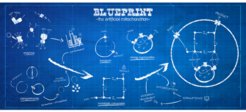Bottom-up construction of the artificial mitochondrion
Within bottom-up synthetic biology, we consider the proteins and electron shuttles, which constitute oxidative phosphorylation electron transfer chain as essential building blocks or functional parts, needed to engineer an energy conversion device, like “artificial mitochondrion” [1]. This machinery should be integrated in a suitable interface (e.g., phospholipid or polymer membranes) and should involve some form of compartmentalization to enable the generation of proton motive force. The reductionist and modular concept gives a possibility to (re)construct minimal and (more) efficient energy regeneration schemes, and to circumvent the immense experimental penalty if one aims for exact and complete reproduction of nature. The explicit questions here are whether and which parts can be omitted and replaced, and what would be the specific process blueprint, tailored with regard to the overall system (e.g., source of energy, coupling with the respective energy sinks, cofactor recycling, closing loops to enable continuous operation, etc.) (Fig. 1). Additionally, the biological toolbox is already very diverse due to the great heterogeneity of organisms but it can be further extended by introducing fully foreign components, for example of purely chemical origin. With this in mind we constructed several generations of chemical to energy driven artificial organelles, by integrating biological parts (ATP synthase, bo3 oxidase, complex I) within different membrane compartments.

A significant disadvantage of these synthetic constructs featuring vesicles functionalized with various membrane proteins is their low functional and structural stability as well as lifetime. In the absence of the repair and replacement mechanisms, the inserted enzymes are unstable and rapidly lose their activity. Furthermore, compartments, as well as integrated enzymes, are subjected to oxidative damage that leads to enzyme deactivation and compartment permeabilization, both of which have a strongly diminishing effect on ATP regeneration. Hence, we are looking to replace traditionally used lipid compartments with more durable and versatile polymer ones. In this regard, we are exploring the integration of enzymes related to energy regeneration into polymer compartments comprising graft co-polymer PDMS-g-PEO, a polymer that is miscible with lipids as well as with block co-polymers, thus enabling the formation of so-called hybrid vesicles [2]. PDMS-g-PEO forms membranes with a thickness and fluidity similar to natural membranes, thus presenting an enzyme compatible environment. In our recent work [3], we integrated bo3 oxidase and ATP synthase in the said polymer as well as lipid/polymer hybrid compartments. We observed a high level of retained activity of the inserted bo3 oxidase, which was reflected by the proton gradient established upon enzyme activation. This gradient was maintained due to the low proton permeability of polymer compartments. Interestingly, enzyme insertion into hybrid vesicles caused a reorganization of the lipid fraction of hybrid membranes, which resulted in even lower membrane permeability. Astonishingly, the polymer protected bo3 oxidase from oxidative damage (Fig. 2 left), while maintaining high structural integrity, both being invaluable attributes for the construction of energy regeneration modules. Finally, with the enzyme integration into PDMS-g-PEO-based membranes, we were able to extend their functional lifetime, leading to retention of their activity for over 13 days.
To enable formation of energy regeneration modules of higher complexity the step-wise assembly of multiprotein vesicles with the preserved optimal configuration of each individual enzyme is required. To address this, membrane fusion mediated by fusogenic proteins was explored (Fig. 2 right). The latter were incorporated into polymer and hybrid compartments to form a versatile and widely biocompatible minimal fusion platform. The insertion of fusogenic proteins in polymer and hybrid compartments was analyzed in greater detail with respect to the protein orientation and insertion efficiency, as well as membrane architecture. For the first time, it was found that synthetic amphiphile membranes also undergo fusion, mediated by the protein machinery for synaptic secretion, and remarkably high membrane and content mixing was observed [4].
![Fig. 2 left- membrane-integrated proton pump was protected against ROS in hybrid and, in particular, polymer containers [3]; right - use of SNARE mediated fusion for controlled assembly of artificial mitochondrion [4]](/4235547/original-1637321473.jpg?t=eyJ3aWR0aCI6MjQ2LCJvYmpfaWQiOjQyMzU1NDd9--8b970446e13b809f41d5c6d4f81563acfb5218da)
Funding: BMBF / MaxSynBio
Collaborations:
Prof. Sundmacher & Dr. Ivanov, MPI Magdeburg
Dr. Dimova & Prof. Lipkowsky, MPI Potsdam
Prof. Landfester, MPI Mainz
Prof. Kastritis, Martin Luther University Halle-Wittenberg, Halle/Saale
Selected recent publications
[1] Otrin, L., Marušič, N., Bednarz, C., Vidaković-Koch, T., Lieberwirth, I., Landfester, K., and Sundmacher, K., Toward Artificial Mitochondrion: Mimicking Oxidative Phosphorylation in Polymer and Hybrid Membranes. Nano Letters, 2017. 17(11): p. 6816-6821.
[2] Otrin, L., Kleineberg, C., Caire da Silva, L., Landfester, K., Ivanov, I., Wang, M., Bednarz, C., Sundmacher, K., and Vidaković- Koch, T., Artificial Organelles for Energy Regeneration. Advanced Biosystems, 2019. 3(6): p. 1800323.
[3] Marušič, N., Otrin, L., Zhao, Z., Lira, R.B., Kyrilis, F.L., Hamdi, F., Kastritis, P.L., Vidaković-Koch, T., Ivanov, I., Sundmacher,K., and Dimova, R., Constructing artificial respiratory chain in polymer compartments: Insights into the interplay between bo3 oxidase and the membrane. Proceedings of the National Academy of Sciences, 2020. 117(26): p. 15006-15017.
[4] Otrin, L., Witkowska, A., Marušič, N., Zhao, Z., Lira, R.B., Kyrilis, F.L., Hamdi, F., Ivanov, I., Lipowsky, R., Kastritis, P.L., Dimova, R., Sundmacher, K., Jahn, R., and Vidaković-Koch, T., En route to dynamic life processes by SNARE-mediated fusion of polymer and hybrid membranes. Nature Communications, 2021. 12(1): p. 4972.

![Fig. 2 left- membrane-integrated proton pump was protected against ROS in hybrid and, in particular, polymer containers [3]; right - use of SNARE mediated fusion for controlled assembly of artificial mitochondrion [4] Fig. 2 left- membrane-integrated proton pump was protected against ROS in hybrid and, in particular, polymer containers [3]; right - use of SNARE mediated fusion for controlled assembly of artificial mitochondrion [4]](/4235547/original-1637321473.jpg?t=eyJ3aWR0aCI6ODQ4LCJmaWxlX2V4dGVuc2lvbiI6ImpwZyIsIm9ial9pZCI6NDIzNTU0N30%3D--247a08e7f776447737116791ac9fa90e69a6aada)